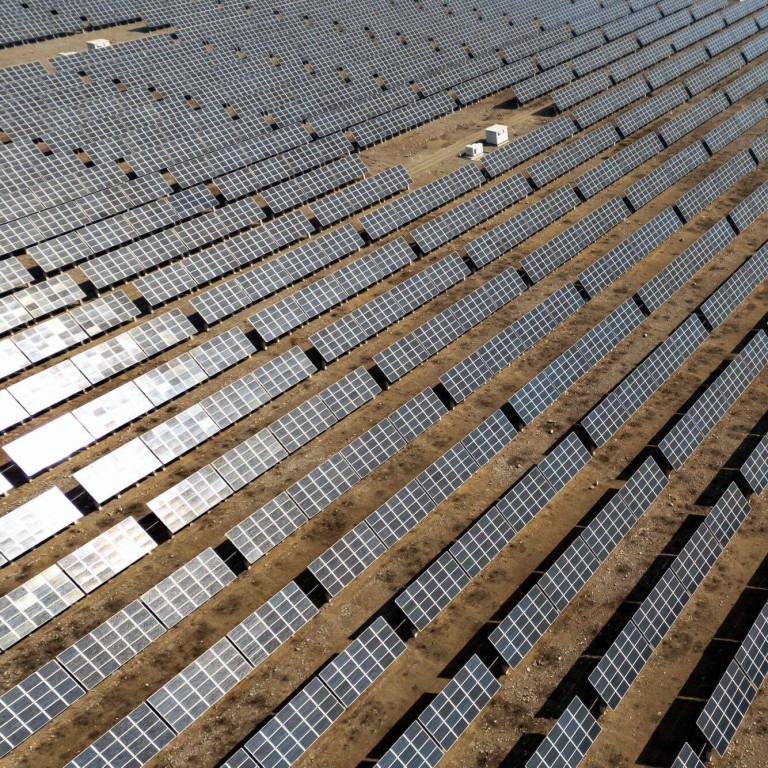
‘Potentially so exciting’: Chinese team finds a way to mass-produce nanosheets with unusual properties
- The 2D material – made from transition-metal tellurides – could be used in areas ranging from lithium batteries to solar panels
- New ‘fast and scalable’ production method could bring the nanosheets out of laboratories and into practical use, scientists say
Chinese scientists have found a way to mass-produce nanosheets from transition-metal tellurides – a 2D material they say could have many applications, from lithium batteries to solar panels.
The team led by scientists from the Chinese Academy of Sciences and Peking University said their “fast and scalable” production method could bring the nanosheets out of laboratories and into practical use.
Writing in the peer-reviewed journal Nature last week, they said their method was faster and safer than existing ones that have a much smaller yield, and it could be used to make batteries with higher stability and energy density.
TMTs are a combination of the metal tellurium and transition metals such as tungsten and niobium. They can be turned into 2D nanosheets where the transition metal is “sandwiched” by tellurium, the CAS said in a statement.
It said TMT nanosheets were a promising area for development because of their unusual properties, including semiconducting and superconducting, insulation and magnetic activity.
Because of these properties, TMT materials “have received widespread attention from the international academic community”, said Wu Zhongshuai, corresponding author and a chemist with the CAS Dalian Institute of Chemical Physics.
The nanosheets could be used in areas ranging from energy storage and developing “novel electrodes” for supercapacitors and batteries, to hydrogen production and photovoltaics, the statement said.
They could also be used as electrocatalysts to improve the performance of lithium-oxygen batteries due to being more stable and having a bigger storage capacity, according to the paper.
“The list of industries that would enjoy significant efficiency improvements from the mass production of TMT nanosheets is extremely long,” Wu said in the CAS statement.
“This is why this 2D material is potentially so exciting.”
China can win EV battery race if industry, academia cooperate: leading scientist
But the potential of TMT nanosheets has not been explored as much as other 2D materials outside labs because of the lack of “industrial-scale, safe, reproducible and scalable synthesis techniques”, the researchers wrote in the paper.
Nanosheets are typically produced through an “exfoliation” method, where chemical solutions are used to peel off thin layers from a compound to eventually create extremely thin 2D sheets, according to the CAS.
Previous production methods relied on toxic and flammable chemicals, and could only create nanosheets at the gram level with long processing times of more than 30 minutes, which restricted their applications, the paper said.
The team discovered a new method based on a chemical called lithium borohydride that is stable and not flammable – which they found could produce more than 100 grams of nanosheets in less time.
“To the best of our knowledge, our exfoliation method is the only one that allows production on such a large scale in only 10 minutes,” the team wrote.
Chinese scientists produce a powerful winter-proof lithium battery
Their method starts with lithiation – in which hydrogen atoms in molecules are replaced with lithium – followed by exfoliation.
“This method is like inserting a ‘chemical spatula’ between each layer,” Wu said.
They were able to produce 108 grams of niobium telluride nanosheets, two orders of magnitude more than previous methods. The team also used their method to create nanosheets using other transition metals, which showed the method was universal, according to another CAS statement.
“We have developed a general solid lithiation and exfoliation method for the hundred-gram synthesis of high-quality TMT nanosheets that has the potential to revolutionise their commercial manufacture,” the team wrote in the paper.
Wu said the cost of raw materials and equipment for mass production might still present a challenge for commercialisation.
However, the team said their “universal and scalable” method could be used to explore “new quantum phenomena, potential applications and commercialisation”.

